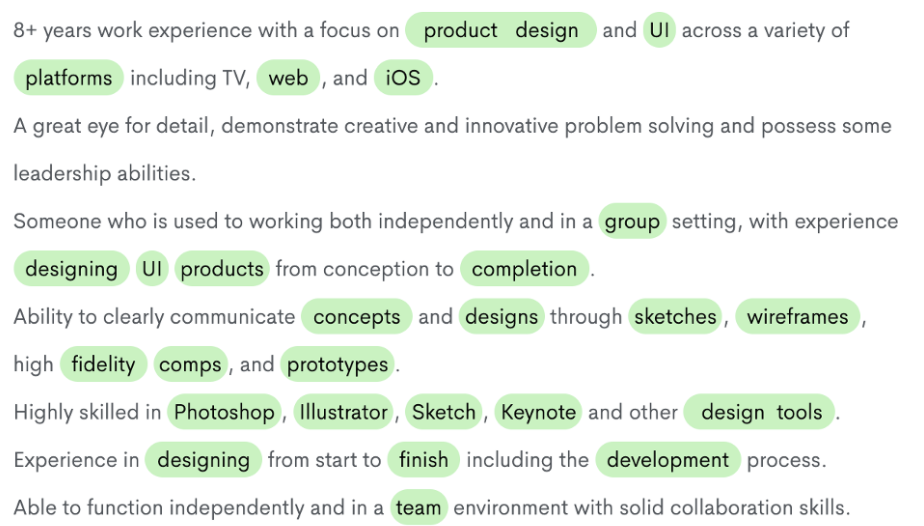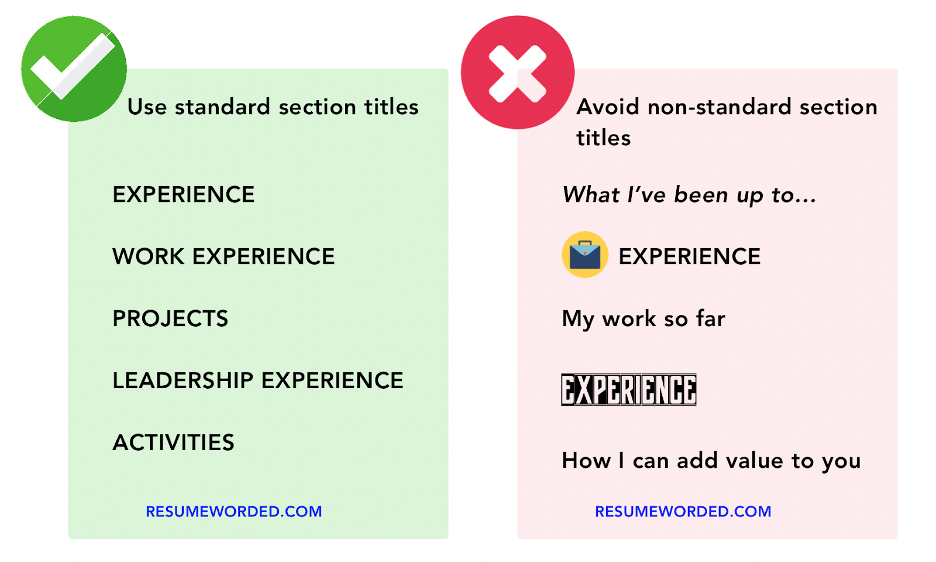You’ve read all the careers blogs. You know that networking is king. And yet, despite being told how important it is to “put yourself out there” and “be yourself,” you have no idea what to actually do. If you’re sick of the platitudes and ready for some actionable tips you can put into practice, we’re here for you!
Types of networking: Inbound and Outbound
Broadly speaking, there are two types of networking — inbound and outbound. Inbound networking, just like the name suggests, is all about making people come to you, while outbound networking relies on approaching others. The key is finding the strategies that work best for your personality and situation — and the more tips you can put into practice, the higher your chances of success.
Inbound networking
Inbound networking relies on the same principles as inbound sales. By maximizing your visibility on social networking sites and other public channels, it’s possible to make opportunities come to you. This approach is ideal for introverts who have trouble approaching people they don’t know, but don’t fall into the trap of thinking it requires less effort.
Optimize your LinkedIn profile
LinkedIn is unequivocally one of the most valuable professional resources out there. Even if you’re not otherwise interested in social media or digital networking, having a good LinkedIn profile is one of the best — and easiest — things you can do for your career. Yes, even if you aren’t actively job searching!
If you aren’t sure where to start, our free LinkedIn Review service can instantly give you tips on how to stand out. Our review can generate sample headlines and summaries, improve your profile score, and give you personalized advice. Optimizing your profile will ensure you appear in more searches, are seen by recruiters, and get more people following and connecting with you.
Another good way to optimize your LinkedIn profile is to include relevant keywords in your LinkedIn headline. Use the tool below to get a list of keywords relevant to your specific field or job.
Build a brand
If you haven’t already, it’s time to embrace social media. For job hunters, this mostly means LinkedIn. There’s a lot more to LinkedIn than just creating a profile — you can use it as a blog, resource center, and social network.
The best place to start is by exploring content that’s already there. Search for topics using hashtags, read and comment on posts that are trending, engage with discussions, and share interesting articles. Then try creating some of your own — post regularly to your feed, share your own professional journey, and cultivate a presence on your blog. For even more ways to maximize your LinkedIn experience, check out our step-by-step checklist.
Create content
This includes, but isn’t limited to, LinkedIn. If you really want to attract people without reaching out yourself, you need to create something they’ll be attracted to. Writing blog posts about current trends in your industry, sharing interesting articles, and offering your services are all great ways to get started. If you have the time and inclination (and depending on your industry), you might consider starting a podcast, creating videos or livestreams, or interviewing other people in your field. The more unique content you can create in your field of expertise, the more traction you’ll gain as an authority in your field.
Outbound networking
If you’re comfortable reaching out to people, outbound networking is the most direct way of making and maintaining connections. It requires you to be proactive, but remember that you don’t need to follow all of these tips — if you’re more comfortable reaching out to a friend than cold emailing, or you’d rather connect with people on-on-one than at a large event, start with what’s in your comfort zone and branch out from there once you’re more confident.
Set up informational interviews
If you’ve found somebody in your chosen industry or role who you’d like to connect with, there’s nothing wrong with reaching out directly! After all, the best way to get something you want is to ask for it. You can find sample templates at our guide on how to ask for an informational interview. Informational interviews are a great way to start making connections and get the inside scoop on what a particular job, industry, or company is actually like. Just remember not to treat it like a backdoor job interview and be willing to work around other peoples’ schedules (and understanding if they say no).
Nurture your network
When you build connections, don't just re-engage them when you need something. That's sleazy. Instead, regularly check in on your network.
I compiled a few things you can do daily to nurture your network in a few minutes a day.
Be specific when networking
You might not even need to reach out to new people. In fact, many of your existing contacts probably want to already help you. They just don't know how.
Make it easy for them to help you by being specific.
Say things like “I’m interested in making connections with creative directors at tech companies. Do you know anyone who has a role like that?” — a specific ask makes it easy for your contacts to know exactly what you're looking for and helps them identify the right contacts for you.
Notice how this is very different to common, generic asks like: "Could you help me with my job search", "Can I pick your brain?" or "Let me know if you can help?".
Reach out to recruiters
Once you know what kind of jobs you’re looking for, it may be time to reach out to recruiters directly. The best place to find recruiters is on LinkedIn — just search for terms like “Recruiter," "Human Resources", and "Staffing,” or look them up directly from a job posting or company profile. Here are some more tips on how to find recruiters on LinkedIn, including sample templates to help you craft that perfect opening message.
Related: How To Find a Headhunter
Connect with people on LinkedIn
LinkedIn isn’t just useful for finding a job — it’s also a great way to connect with people. You don’t need to know somebody to connect with them. If they work in your industry, are contributing interesting content, or are somebody you’d like to get to know, you might as well reach out. The trick is to avoid LinkedIn’s default message and send your own personalized one. Here are some templates you can use to get started.
Rekindle old relationships
If you’ve fallen out of touch with old friends, coworkers, and professional acquaintances … well, who hasn’t? But just because a relationship has fallen by the wayside doesn’t mean it’s gone forever. If you’d like to get in touch with contacts from your past but aren’t quite sure how to go about it, read our guide on how to reach out to someone you haven’t talked to in a while, including sample email templates for all kinds of situations.
Meet a friend of a friend
When it comes to networking, it’s all about who you know … and who they know. If you’re like most people, you’ll find it easier to meet people through mutual acquaintances than by cold emailing complete strangers. But you don’t need to wait for these introductions to happen naturally — it’s okay to ask for them! You can do this directly, by asking your current contacts to introduce you to someone, or indirectly through LinkedIn’s online introduction tool. It also works in person. If you’re at an event and don’t feel fully comfortable approaching someone you don’t know, try joining in a group conversation or asking someone you do know to introduce you.
Attend a networking event
Career fairs and networking events are explicitly aimed at helping you meet people, so why not take advantage of them? You can search for virtual fairs on sites like Meetup or Eventbrite, check Facebook events and other social media, ask your contacts or alumni network, sign up for email updates from popular conference sites, or even take a look around your local area to see if any in-person events are happening.
After you’ve met people at these events, make sure you follow up with them to keep in touch and make the most of the connection. Here are some tips and email templates to make it even easier.
Take advantage of alumni networks
If you’re lucky enough to have an alumni network, take advantage of it — it’s there to help you! Sign up for emails from your alumni association, connect on social media, attend events, reach out to fellow alumni, and consider volunteering your time or expertise to current students or newer professionals. Even just a few conversations or a couple of events per year can keep you in the loop for when you most need it.
Volunteer at industry events
If you can, why not volunteer to help out at an alumni or industry event? There’s no better way to get on the ground floor, get to know people, and make a fantastic impression. In-person events are especially in need of volunteers if that’s an option for you. You can reach out directly to the committee organizing an event you’re interested in. If you’re interested in volunteering more broadly, search for specific volunteering opportunities by looking up local or national volunteer organizations and charities on their own websites or sites like VolunteerMatch, Volunteers of America, or Volunteer.gov.
Not only is it a great networking opportunity, it can also make a decent entry on your resume, especially if you’re new to the field or changing careers.
Pro tip: A lot of networking events can be a waste of time. Make sure you're going to the right kind of networking events — we wrote an essay on how to find the right networking events. You should read it!
Build relationships with coworkers
Networking isn’t just for landing a new job! If you’re happily employed or starting a new job, getting to know your coworkers is one of the best things you can do. If you aren’t naturally outgoing, work remotely, or don’t work closely with anyone on the same team, this might not happen on its own, but even the smallest bit of effort can make a huge difference. Reach out via email or company Slack channels, stick around after meetings once in a while for a chat, check in regularly with your boss, and try to organize a lunch or social event once in a while if you can. A small but consistent effort long-term can save a lot of effort reconnecting down the line when you’re job searching, so it’s definitely worth it!










